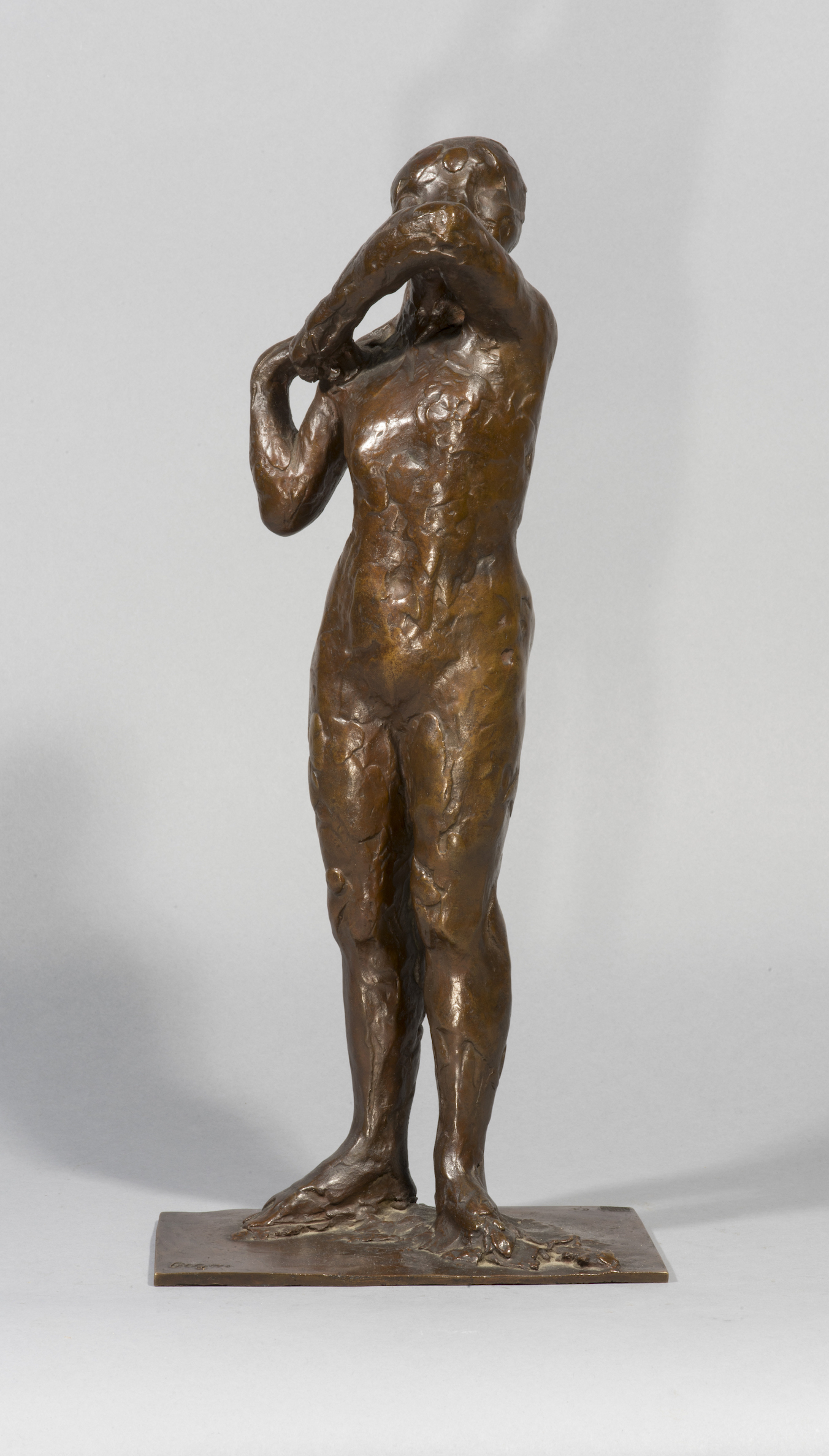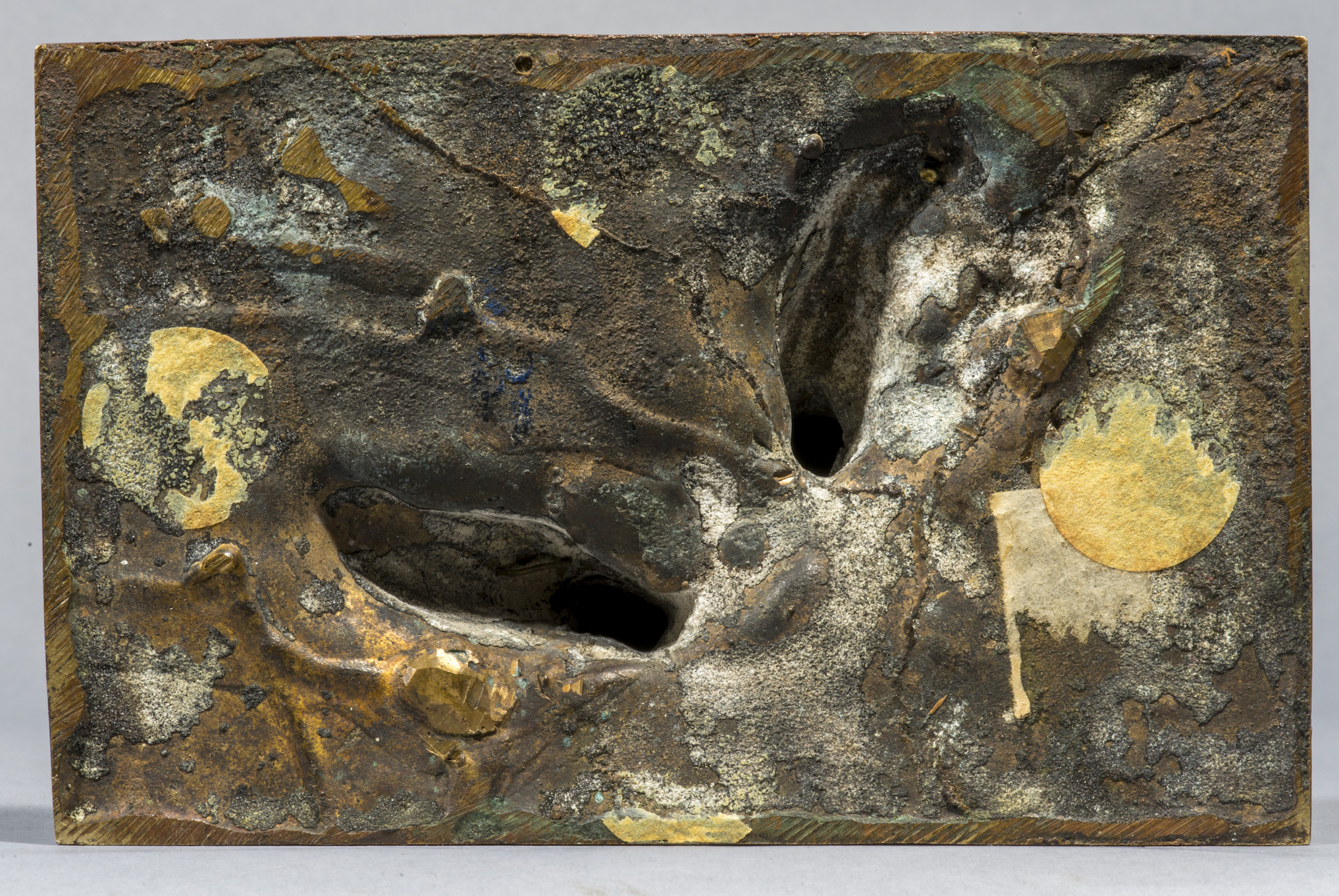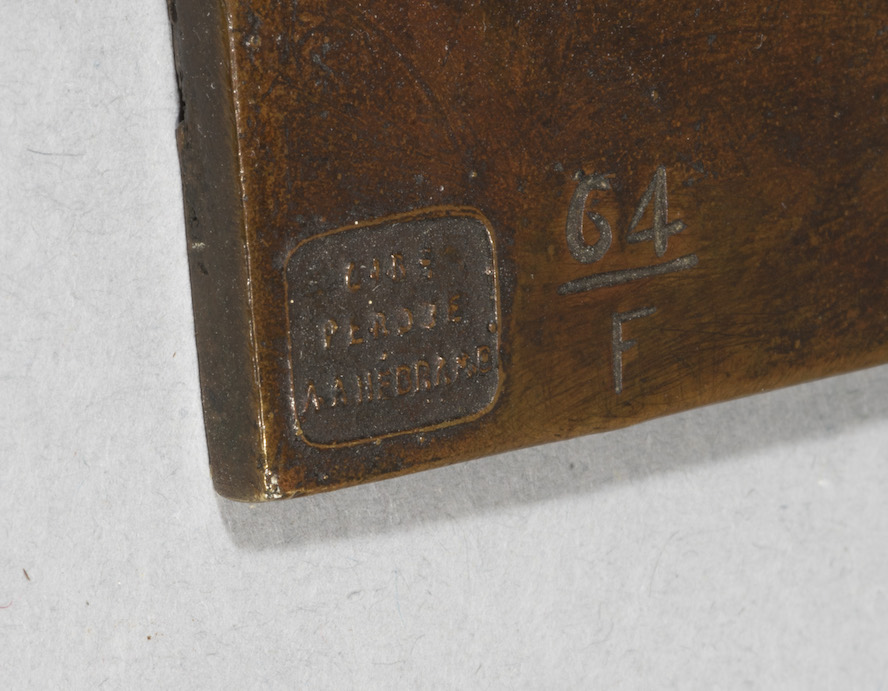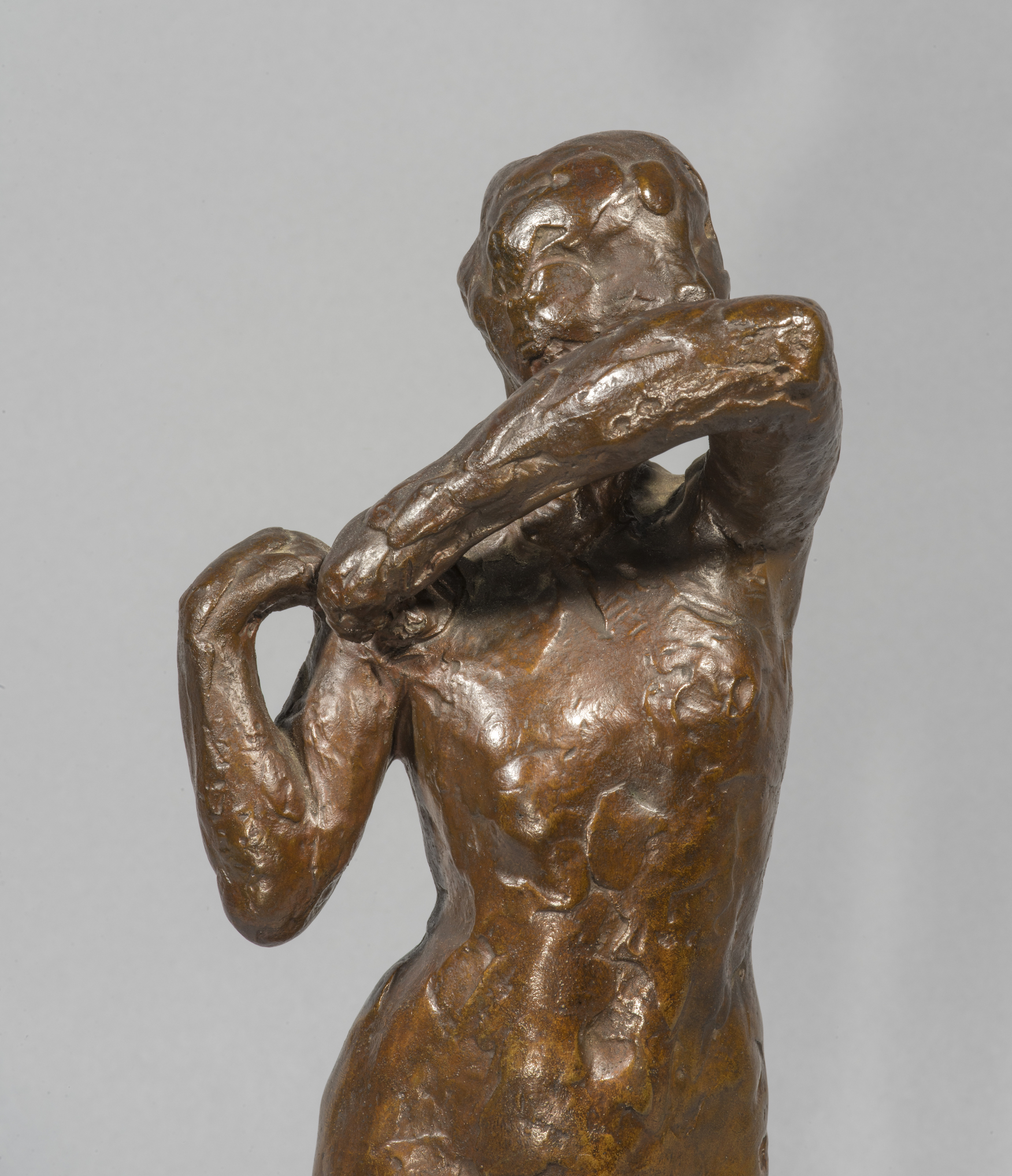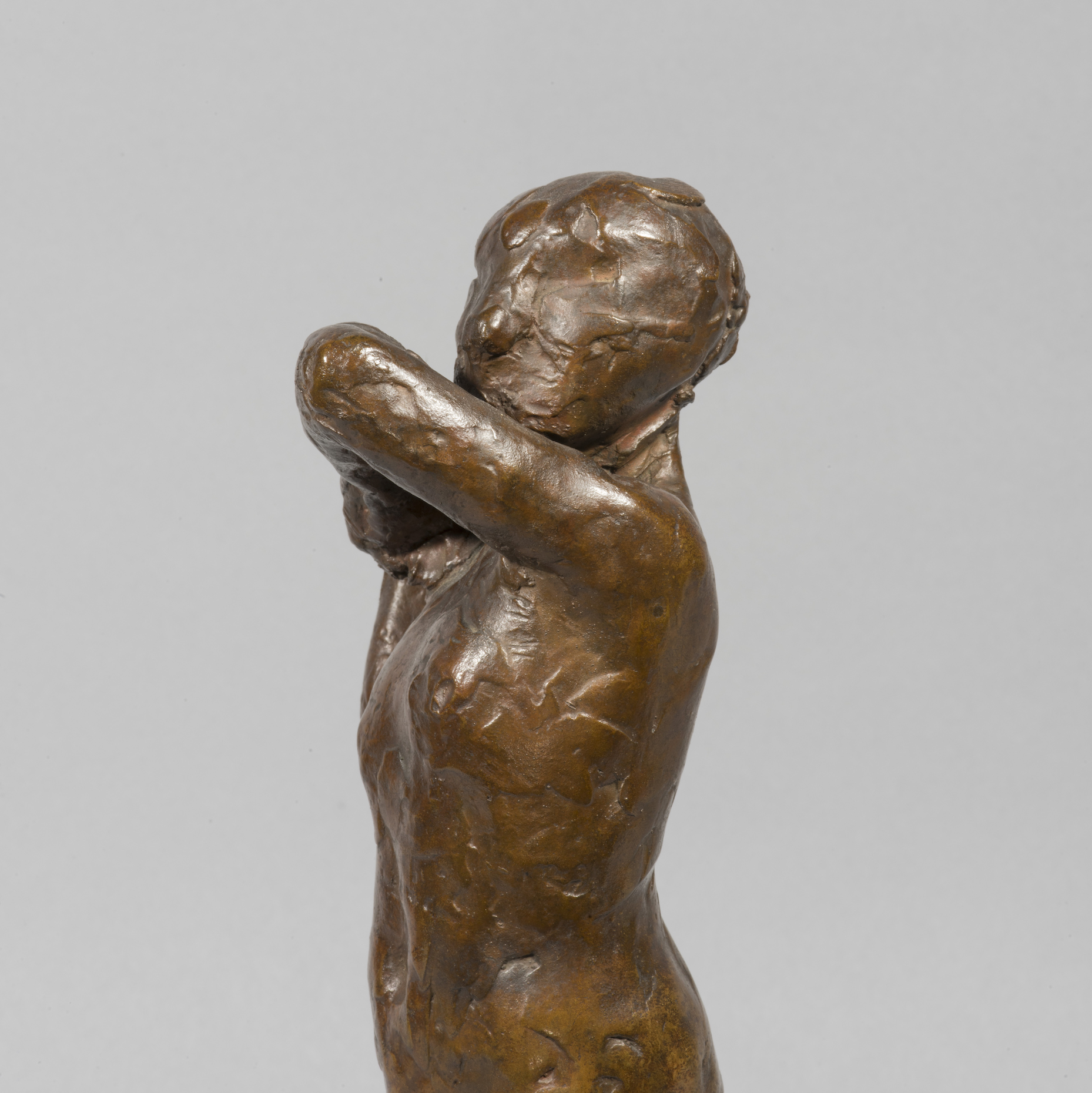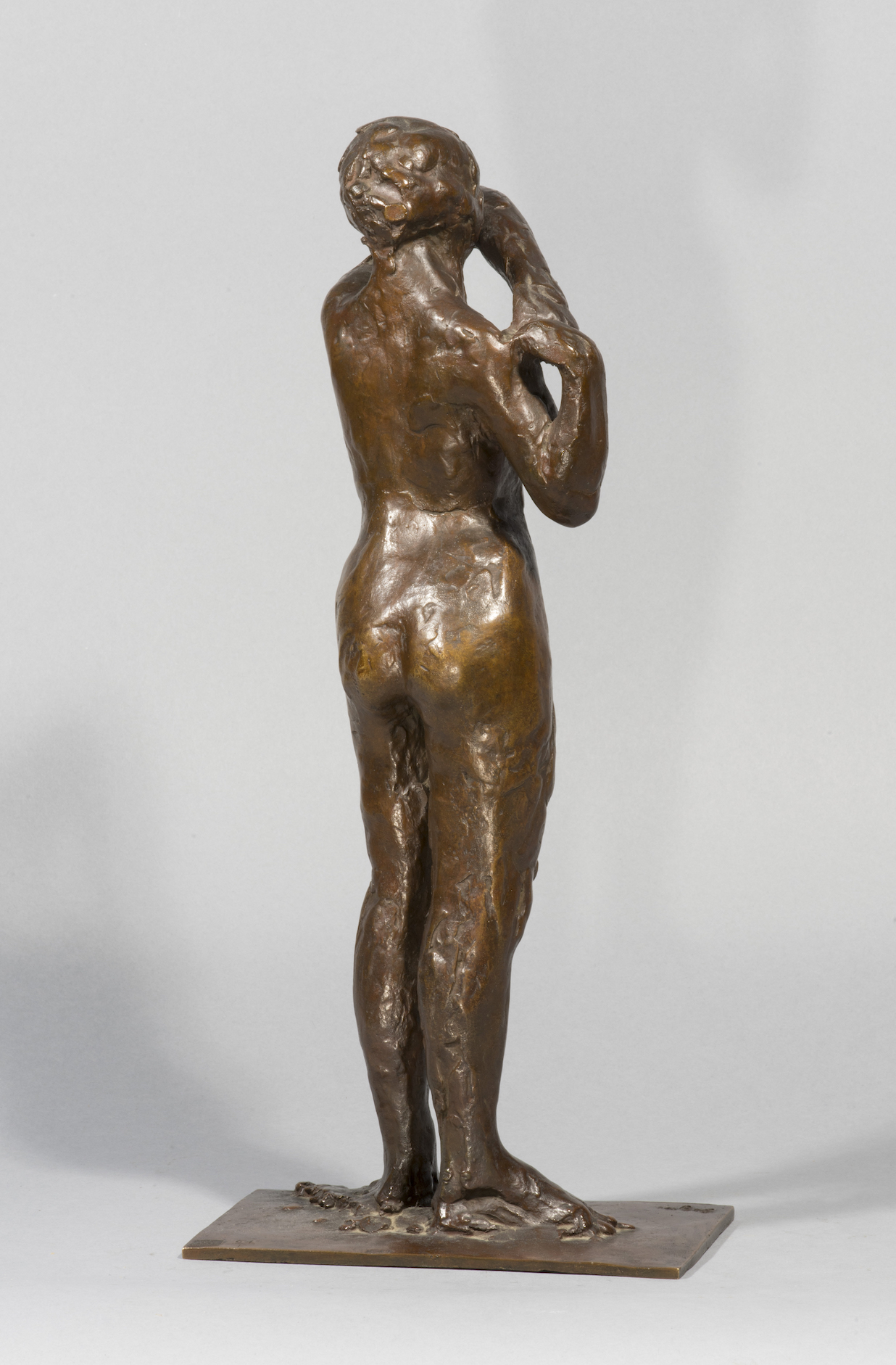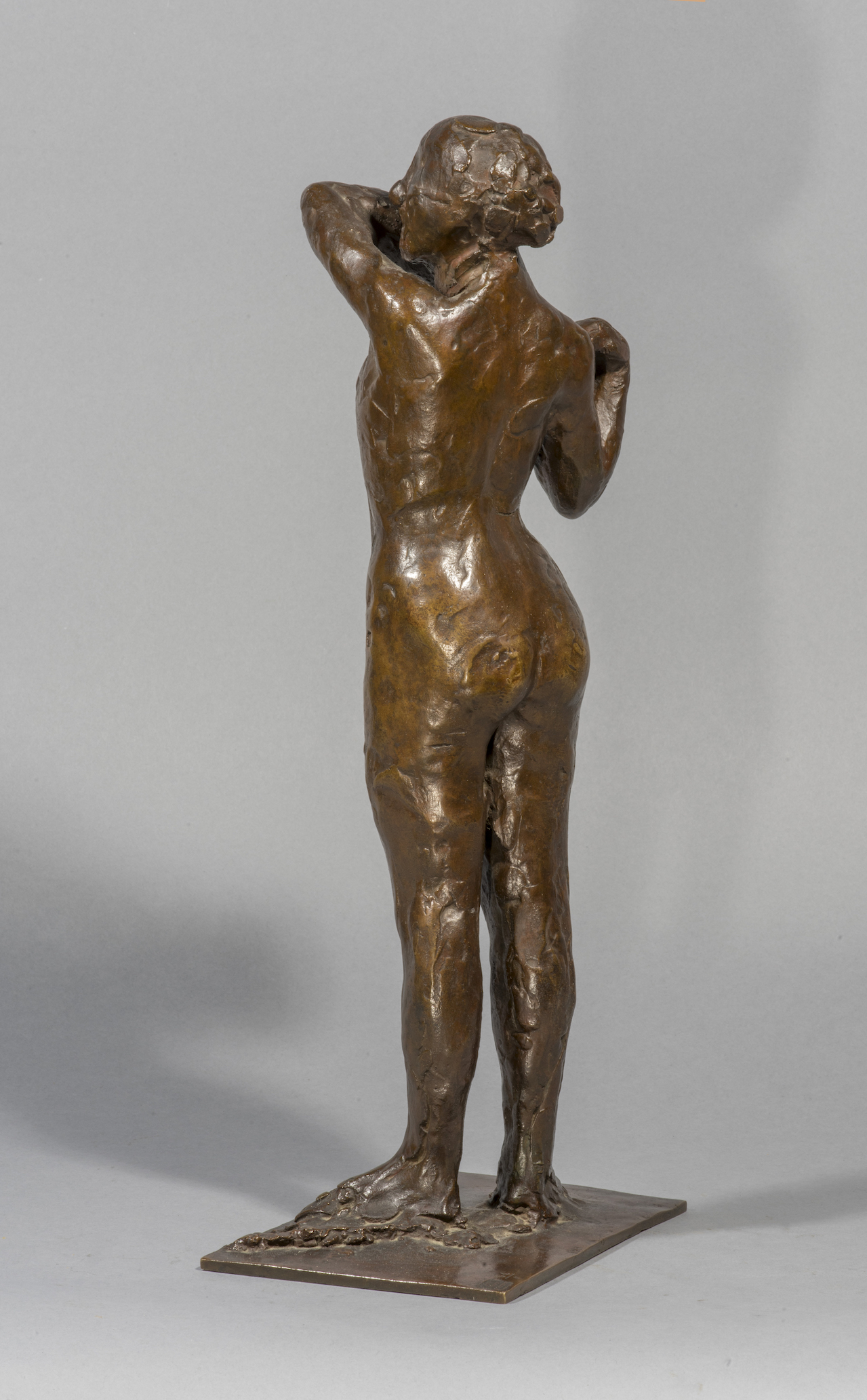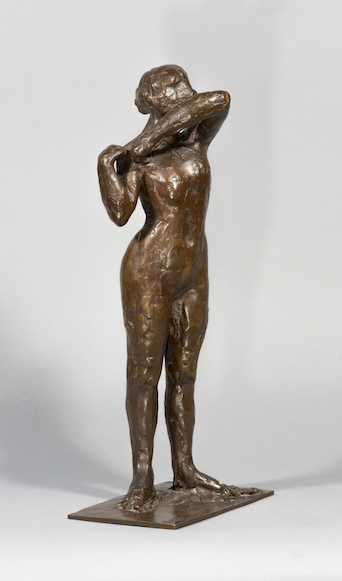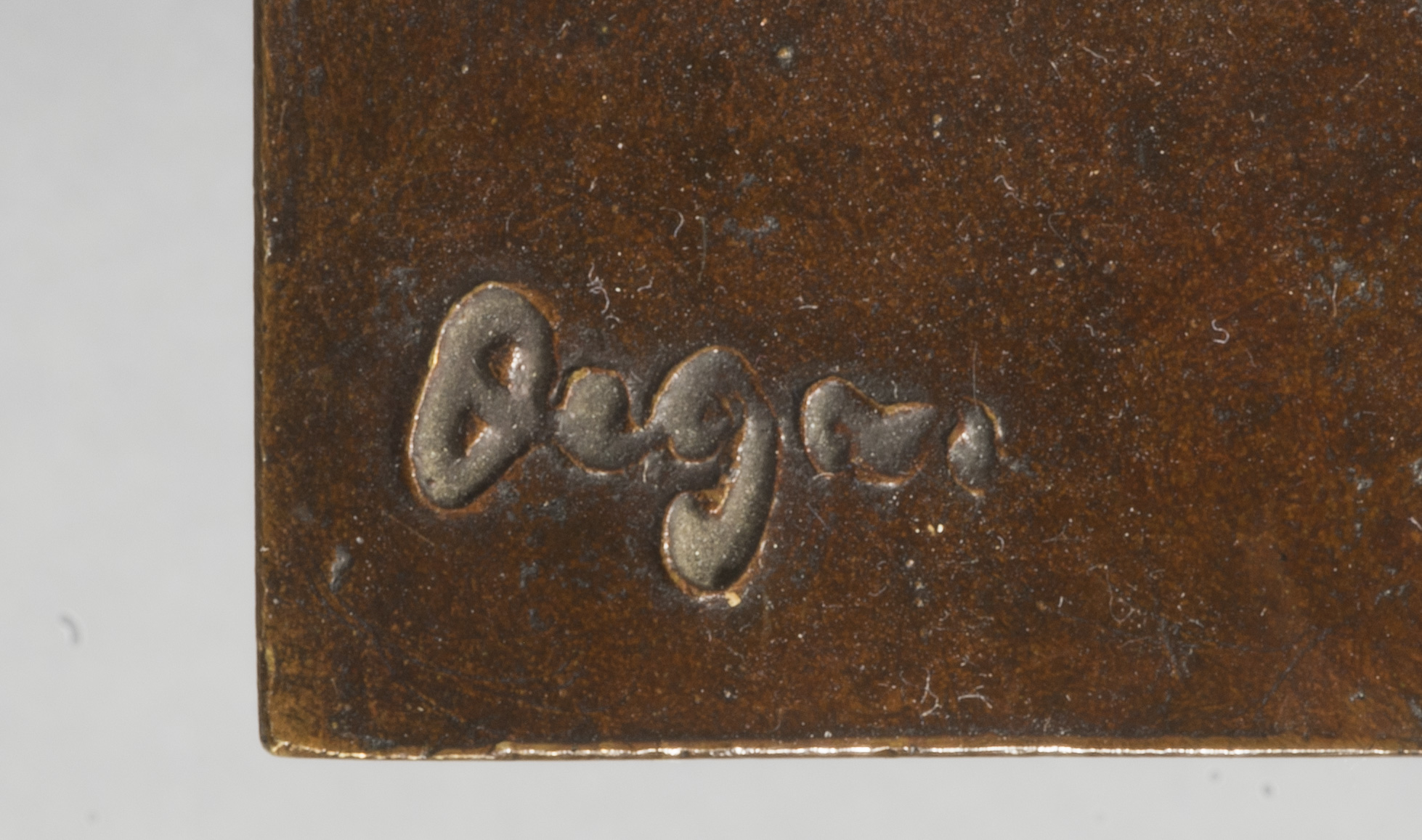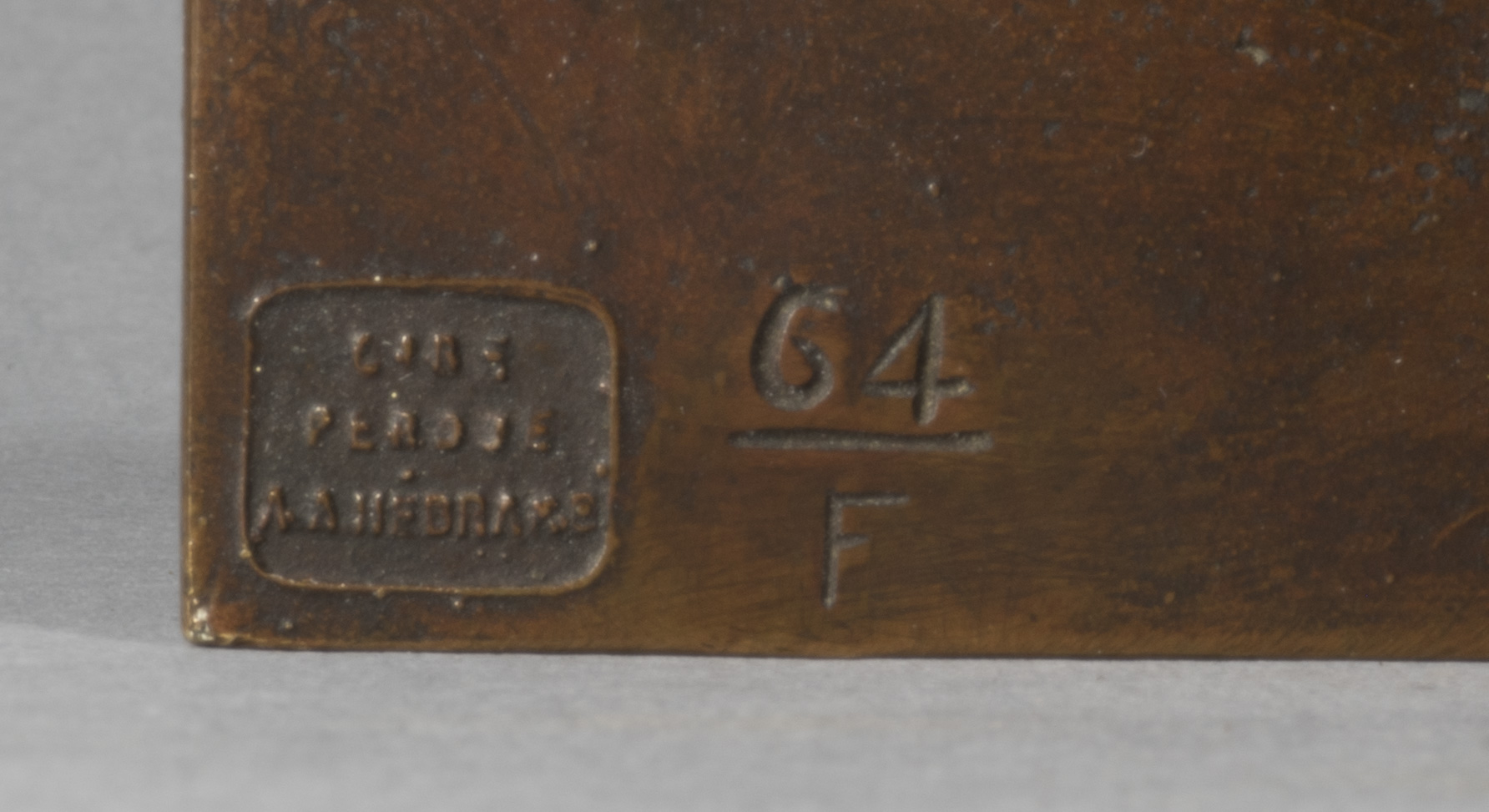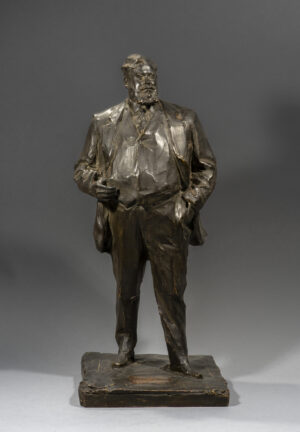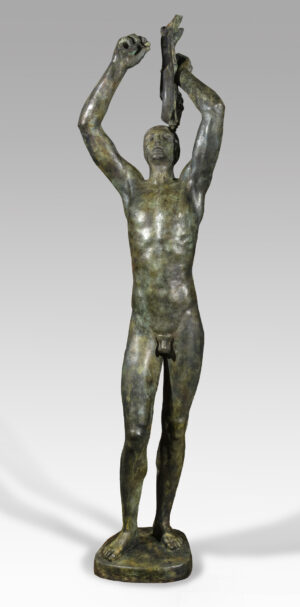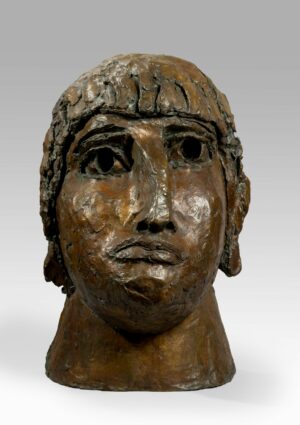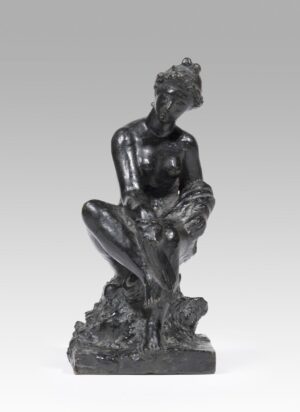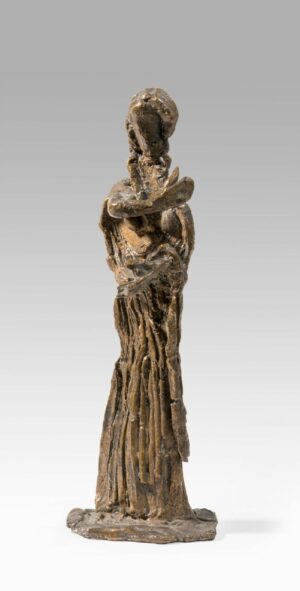Description
In 1919, the art dealer Joseph Durand-Ruel wrote: “It is quite true that Degas spent an enormous amount of time, not only at the end of his life but over the last fifty years, modeling clay. Whenever I went to see Degas, I was almost as certain to find him modeling clay as I was to find him painting.” When Degas died in 1917, Durand Ruel found that over one hundred and fifty wax and clay sculptures were scattered around the studio. After a contract between the artist’s heirs and the Parisian foundry of Adrien-Aurélien Hébrard was painstakingly signed in May 1918, seventy-four sculptures were finally cast in bronze. One series marked “HER.D” was reserved for the heirs, while a second, allocated to the foundry, bore the inscription “HER”. Twenty other series destined for sale and which were to be marked “2-21” were given the letters “A-T” instead. Albino Palazollo, Hébrard’s Milanese master foundryman and expert in lost-wax casting, had developed a method for preserving the artist’s wax original throughout the bronze casting process.
The Barye exhibition at the Ecole des Beaux-Arts in 1875 and the Daumier exhibition in 1878 may have played a role in Degas’ career as a sculptor and his choice of small formats. Mention should also be made of Duranty’s 1879 article on “les statuettes tanagra”, which had just been discovered. His public career as a sculptor was limited to the presentation of a single statue, the Petite danseuse de quatorze ans, at the sixth Impressionist exhibition in 1881. We are struck by the fact that almost all the dancers modeled by Degas are nude, whereas his pastels and canvases almost always show ballerinas in costume. The various arabesques thus read like anatomies of different positions, structures of movement; magnificent testimonies to this painter’s sculpture, comparable to the works of the greatest makers of statues. Our cast possesses all the characteristics of the finest Hébrard castings, in particular the beautiful light-brown patina that reveals the soft modeling of the original wax.

